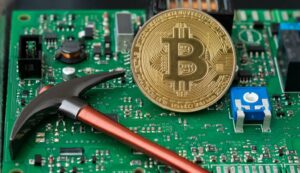
What it does mean is that they will only see growth if they can continue to win out against non-blockchain-based alternatives – and that won’t be all the time or for every payment type. Stablecoins and the blockchain infrastructure that surrounds them do have a place in the future of cross-border payments, but they are one part of a hugely complex mix of solutions that make up the world’s financial plumbing. In some cases blockchain-based payments do have the potential to be cheaper, but by no means always, and additional expenses such as customer service remain the same. Within the cross-border payments industry, the perception of any form of blockchain-based infrastructure has experienced considerable changes over the last few years, going through periods of great enthusiasm and significant skepticism. For Ripple, the move is a hugely important one for a number of reasons. Firstly, the Web3 economy is increasingly in need of non-volatile stores of value, which has driven up the circulation of stablecoins significantly.
XRP transactions
These organizations tend to restrict the flow of money with fees, currency exchange charges, and processing delays. In actuality, Ripple Labs is looking to leverage the technology behind XRP to allow for faster banking transactions around the world. While Bitcoin and other cryptocurrencies are built on the idea of separating financial transactions from the commercial organizations of traditional currencies, Ripple is almost the opposite in every sense. That facilitates transactions all over the world, and transfer fees are far cheaper than the likes of Bitcoin.
- XRP works with fiat currencies on more than 10 digital exchanges to help transfer value across borders quickly and efficiently.
- MoneyGram ultimately moved to Circle’s USDC stablecoin in combination with money transfer-focused Stellar’s blockchain protocol, while Facebook also proposed its own stablecoin-based payments system, Libra.
- Participating nodes verify the authenticity of transactions by conducting polls, enabling near-instantaneous confirmations, cheaper built-in transaction fees, and increased network scalability.
- In the past months, the Swiss federal council, which runs the country, has signaled a willingness to cuddle up to both NATO and the EU on security and defense.
- For the sake of example, let’s assume that everyone uses PayPal, which charges a 2.9% fee for each transaction.
Ripple is Kind of Centralized
This push towards more third-party validating nodes shows that the Ripple team is making an effort to make the network more decentralized. The financial industry also tends to keep pertinent information shrouded in complicated financial jargon tripping up the average person. Words such as “collateralized debt obligations” and “quantitative easing” have established the financial realm in an esoteric curtain. Bitcoin has a continually growing pool with an eventual maximum, and Ethereum theoretically has no limit. On the other hand, Ripple launched with all of its 100 billion XRP tokens right out of the gate. That number maintains with no mining, and most of the tokens are owned and held by Ripple Labs itself — around 60 billion at the latest count.

How Does Ripple Work?
The news of a big Ripple win broke on Aug. 7, and since then, the price of XRP has increased from $0.50 to $0.60. Vitalik Buterin, Ethereum founder responded to criticism of Ether on-chain transfers. Buterin’s recent Ether transfers have raised concerns among ETH holders. Ether crumbled under selling pressure since ETF launch and consistent outflows have negatively influenced the altcoin’s price. Bitcoin and XRP are popular digital currencies with different use cases. Choosing between the two cryptocurrencies and deciding whether these features are advantages or disadvantages depends on the specific needs and preferences of the user.
- Multiple players severed ties and the company shifted focus to other markets, with the US share of its clientbase dwindling to 10% by the start of 2024.
- It operates in a new industry, so there have been many speed bumps, such as regulatory concerns and lawsuits.
- To avoid selling XRP to institutional customers, Ripple uses XRP in its services outside of the U.S. but not within it.
- Unlike Bitcoin, however, the XRP Ledger is not based on a Proof of Work consensus algorithm and, therefore, does not rely on a process of mining to verify transactions.
- For instance, XRP’s blockchain can connect the ledgers of two or more banks.
- By using XRP for cross border payments, financial institutions can bridge currencies and ensure payments are sent and received in local currency on either side of a transaction in as little as 3 seconds.

It is something that needs to be understood by potential buyers and sellers because it gives those financial institutions a much higher level of control over Ripple than most other cryptocurrencies out there. Sending payments overseas using the legacy financial system typically takes one to four business days and can be expensive. If a person uses XRP as a bridging currency, it’s possible to settle cross-border transactions in less than five seconds on the open-source XRP Ledger blockchain at a fraction of the cost of the more traditional methods. Ripple has been expanding its capabilities by acquiring companies involved in cryptocurrency and technology that complements it.
- Most recently, Ripple sold 300 million XRP in two batches of 150 million each as the price surged.
- In a perfect world, patient long-term investors who held on to their XRP during the really lean years should be handsomely rewarded.
- In 2022, however, the crypto winter bled into stablecoins, causing the collapse of then-popular TerraUSD, which was known as a stablecoin but used an algorithmic backing that ultimately failed.
- Ripple is also a holder of XRP and one of many developers building on and contributing to the XRP Ledger.
- From instant payments and mobile banking to new technologies and regulatory challenges, this eBook provides insight into the ways each region’s payment systems are progressing.
In addition, other leading altcoins such as Cardano (ADA), Solana (SOL) and Polygon (MATIC) were up 17%, 18% and 19% respectively. Crypto What is Ripple markets have responded enthusiastically to the split ruling—note that the trial is not yet over—and XRP rose approximately 75% on July 13.
XRP Ledger and XRP
As the industry moved away from Ripple amid its lawsuit, some companies abandoned blockchain-based solutions altogether while others looked to stablecoins to provide alternatives. MoneyGram ultimately moved to Circle’s USDC stablecoin in combination with money transfer-focused Stellar’s blockchain protocol, while Facebook also proposed its own stablecoin-based payments system, Libra. This ultimately was pared down to the USDP-based Novi and which briefly provided remittance services between the US and Guatemala between 2021 and 2022.
